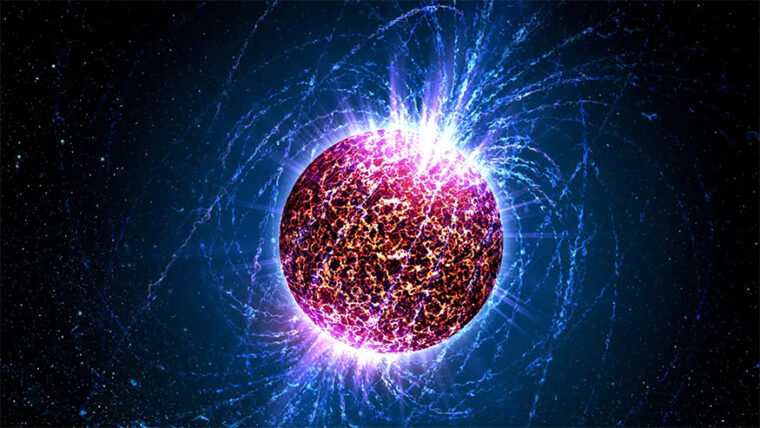Sep 7 2020
The neutrons and protons present in the atomic nuclei tend to share energy and momentum in tight quarters. However, their exact mode of energy sharing that maintains them bound inside the nucleus—and even where they are present inside the nucleus—is still a crucial puzzle for nuclear scientists.
 New predictions are tightly connected to how large neutron stars grow and what elements are likely synthesized in neutron star mergers. Image Credit: NASA.
New predictions are tightly connected to how large neutron stars grow and what elements are likely synthesized in neutron star mergers. Image Credit: NASA.
Scientists at Washington University in St. Louis and Lawrence Livermore National Laboratory (LLNL) in California endeavored to address these questions through a new study by taking advantage of the information available from nuclear scattering experiments to create rigorous constraints on how nucleons (protons and neutrons) get organized by themselves in the nucleus.
The study has been reported in two corresponding papers in Physical Review C and Physical Review Letters.
Research professor of chemistry Robert J. Charity, professor of physics Willem H. Dickhoff, and professor of chemistry and physics Lee G. Sobotka, all from Arts & Sciences, are co-authors of the papers headed by Cole Pruitt, who is now a postdoctoral fellow at LLNL and obtained his PhD at Washington University in 2019. Pruitt completed most of the study for these papers as part of his thesis work.
The study demonstrates that for many cornerstone nuclei, a small fraction of the neutrons and protons hold the major portion of the overall energy that maintains them bound within the nuclei, which is about 50% more than anticipated from standard theoretical treatments.
Moreover, the research has come up with new estimates for the “neutron skin”—a region where additional neutrons get accumulated—of many neutron-rich nuclei. These estimations are, in turn, closely associated with how huge neutron stars grow and what elements are probably produced in neutron star mergers.
Our results quantitatively indicate how asymmetry, charge and shell effects contribute to neutron skin generation and drive a disproportionate share of the total binding energy to the deepest nucleons.
Cole Pruitt, Postdoctoral Fellow, Lawrence Livermore National Laboratory
Gaining insights into how nuclear asymmetry energy varies with density is a vital input to the neutron equation-of-state, which governs the structure of neutron stars. However, the direct measurement of neutron skins is not so easy.
According to Pruitt, “A comprehensive model should not only reproduce integrated quantities (like the charge radius or total binding energy) but also specify how nucleons share momentum and energy, all while being realistic about the model uncertainty of its predictions.”
The work reported by Pruitt and collaborators provides a powerful bridge between nuclear physics and astrophysics in the new era of multi-messenger astronomy. The measurement of the neutron skin of several nuclei reported in the letter (Physical Review Letters) could provide stringent constraints on the equation of state of neutron-rich matter, which is a critical ingredient for understanding neutron stars.
Jorge Piekarewicz, Professor of Physics, Florida State University
Piekarewicz is also a leading theorist who did not take part in both studies.
The study was financially supported by the Department of Energy Office of Science and the National Nuclear Security Administration.
Journal Reference:
Pruitt, C. D., et al. (2020) Isotopically resolved neutron total cross sections at intermediate energies. Physical Review C. doi.org/10.1103/PhysRevC.102.034601.